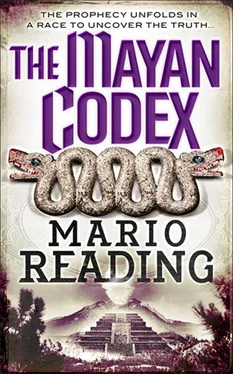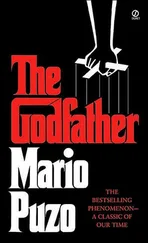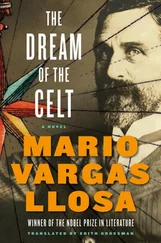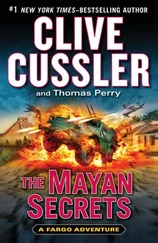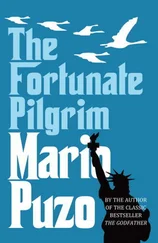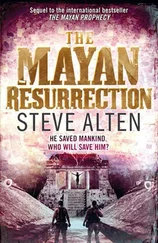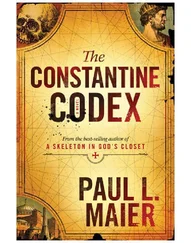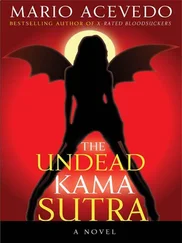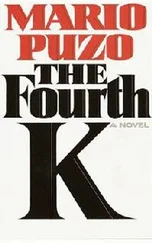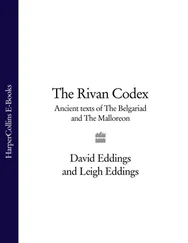Mario Reading - The Mayan Codex
Здесь есть возможность читать онлайн «Mario Reading - The Mayan Codex» весь текст электронной книги совершенно бесплатно (целиком полную версию без сокращений). В некоторых случаях можно слушать аудио, скачать через торрент в формате fb2 и присутствует краткое содержание. Жанр: Триллер, на английском языке. Описание произведения, (предисловие) а так же отзывы посетителей доступны на портале библиотеки ЛибКат.
- Название:The Mayan Codex
- Автор:
- Жанр:
- Год:неизвестен
- ISBN:нет данных
- Рейтинг книги:3 / 5. Голосов: 1
-
Избранное:Добавить в избранное
- Отзывы:
-
Ваша оценка:
- 60
- 1
- 2
- 3
- 4
- 5
The Mayan Codex: краткое содержание, описание и аннотация
Предлагаем к чтению аннотацию, описание, краткое содержание или предисловие (зависит от того, что написал сам автор книги «The Mayan Codex»). Если вы не нашли необходимую информацию о книге — напишите в комментариях, мы постараемся отыскать её.
The Mayan Codex — читать онлайн бесплатно полную книгу (весь текст) целиком
Ниже представлен текст книги, разбитый по страницам. Система сохранения места последней прочитанной страницы, позволяет с удобством читать онлайн бесплатно книгу «The Mayan Codex», без необходимости каждый раз заново искать на чём Вы остановились. Поставьте закладку, и сможете в любой момент перейти на страницу, на которой закончили чтение.
Интервал:
Закладка:
‘The Friar declared himself outraged at what had occurred. He conducted formal ceremonies over the dead, and blessed the survivors. I joined in with these ceremonies, and made much of the wisdom of the Friar’s doings, as my duty was to remain always at his side and to represent our people – for such was the quality of the oath that I had undertaken before the assembled Chilans. An oath that forced me into seeming what I was not. An oath which forced me into observing and annotating the horrors which I saw perpetrated against those of the same blood as myself – those who worshipped the same gods – those who stemmed from the very same clay.
‘This I tell you, in advance, so that you may better understand why I am desecrating the last of our holy books with my writing. For now I am going to recount what happened today, at Mani, under the Friar’s direct supervision, and which makes all that we had previously seen appear as the dalliance of un-parented children.’
81
Sabir was focusing all of his attention on Lamia’s translation of the Chilan’s words. At one point he reached forward and took her hand in his, either to offer or to receive comfort, he was not entirely sure. She allowed her hand to rest in his for a moment, and then she withdrew it, as if she were unable to countenance such a two-way split in her concentration.
Calque stood beside them, his head turned away, to all intents and purposes as if he were refusing to listen to de Landa’s story. But Sabir knew him well enough by now. He could tell by the way Calque stood – by the stiffness in his back and by the sideways tilt of his head – that he was concentrating on every word that Lamia was translating for him.
The Chilan paused in his reading. He was dripping with sweat. His voice was growing increasingly hoarse. His hands shook where they held the book, and he seemed unable to meet anyone’s eyes. It was as if the horror of what he was reading formed a direct part of his own experience, and was not merely a story, written by another, which he was recounting to a partially illiterate audience.
Acan’s mother, Ixtab, hurried to his side. She unpinned her rebozo and mopped the Chilan’s brow and face. He nodded to her in grateful acknowledgment, but he was unable to summon up a smile. The Halach Uinic stood off to one side, his face in his hands. There was neither a mutter nor a murmur from the vast audience below them.
The Chilan gave a profound sigh, and addressed himself once again to the book in front of him.
82
‘The Auto da Fe began today, the twelfth day of July 1562, in the early morning. What occurred was a fulfilment of the first part of the prophecy of the Cycle of the Nine Hells, the first 52-year cycle of which began with the arrival of the Franciscans in the Yucatan in 1544 under Luis de Villalpando, and the final cycle of which will be due to end in the year 2012, marking 9 by 52 years, being 468 in total, between the start of the cycle and its eventual end.
‘At the break of dawn, Friar de Landa ordered the great square at Mani to be cleared of people. Then he ordered his prisoners, the so-called indios rebeldes, to be brought in from their place of incarceration, where they had been constrained to fast for eight hours, as a legally imposed prelude to their torture. Amongst these prisoners were all the remaining great nobles and their families – the Pat, the Xiu, the Canuls, the Chikin-Chels, the Cocoms, the Cupuls, the Hocaba-Humuns, the Cochua, and many others. Their names had been given in by their children, whom the Franciscans had seized from their families, indoctrinated, and forced to submit to the Christian catechism. Thus it was that the children unwittingly became the executioners of their own parents.
‘I, Akbal Coatl, the “night serpent”, whom the Spaniards call Salvador Emmanuel, had not been privy to the kidnap of these people, and thus I was horrified to see that many of the remaining members of my family were amongst their number. At first I was minded to join them. To throw myself into their midst and die with my people. But the man I knew to be the Halach Uinic – the High Priest and leader of all the Maya, whose identity we had kept secret even from the friars – made a sign to me that I should not reveal myself to the Spaniards by word or by gesture. He also made the sign of the written scroll to me, indicating that what I saw must be written down. I believe now that he had been told, or had seen prophesied, what was about to occur.
‘Bowing to my fate, I forced myself to attend to Friar de Landa’s demands on me, which included the formal noting of the names and descriptions of all the people present, their place in our hierarchy, and the crimes, mainly of idolatry, that were to be laid at their feet.
‘Then the questioning began. First, Friar de Landa made it clear to those who admitted to their crimes and repented of their sins that even they would not escape punishment. Instead, they would be forced to stand in full public view, with an idol held in one hand and a candle in the other, and with ropes strung about their necks. In addition, they were to wear the high, cone-shaped hat of shame, known as the coroza, and the penitential robes, known as the sambenito, undergo a full mass and a sermon, have their heads shaved, and then suffer whipping, with a prescribed number of strokes, to be conducted in the public stocks.
‘Despite these warnings, many amongst the number of those present chose this course of action, having heard stories of – or perhaps merely suspecting – what lay in store for those of an unrepentant, or even entirely innocent, demeanour.
‘The penitential were then led away to suffer their punishment. The remainder were formed into lines.
‘Now the torture and mutilation of our people began in earnest. The first chiefs were brought forward and fastened to the hoist, which the Spanish know as the garrucha. This caused them to have their arms pulled back behind them and then to be lifted into the air and dropped, repeatedly, all the while submitting to questions from the friars. When the questioning did not bear fruit, Friar de Landa, claiming to act under the aegis of the Consulta da Fe, ordered that the chiefs have heavy weights of stone attached to their feet, the better to dislocate their members. Time was allowed to elapse between the repeated drops, the further to enhance the pain of those suffering them, and in order to ordain them to “tell the truth for the love of God”. During this period of false release, the Miserere was to be sung by all those not undergoing the question. Should this method be seen to fail, the offending chief was to be first whipped, and then splashed on the face, body, and back with hot wax.
‘The women were given special dispensation by order of Friar de Landa, and only tortured by the garrotte, which involved being placed on a seat, and then having sharp cords, known as cordeles, two on each arm and two on each leg, tightened by means of a short lever. If either of these tortures failed, then the water torture was to be used, in which the victim was to be placed on a trestle, known as the escalera, or potro. Following this, a bostero, or iron prong, would be fitted inside the mouth, after which a strip of linen, known by the Spaniards as the toca, would be forced into the throat in order to guide the flow of water from the jarra. Depending on the number of quarts consumed, the body of the tortured person would distend, forcing the flesh against the seven garrottes with which they had been fastened. Few resisted this technique, and many “spontaneous recantations” were achieved.
‘During the course of the day, many people were brought to torture. Some repented. Many died. Many had their limbs torn from their muscle beds. One great chief, whose name I will not here recount as he is connected to me by family, and from whom I had received especial kindnesses as a child, was accused of conducting a human sacrifice. He had the garrotte placed around his head and tightened by seven turns, which cause his eyes to pop out of their sockets. After this he was allowed to live by order of Friar de Landa, as a warning to his people.
Читать дальшеИнтервал:
Закладка:
Похожие книги на «The Mayan Codex»
Представляем Вашему вниманию похожие книги на «The Mayan Codex» списком для выбора. Мы отобрали схожую по названию и смыслу литературу в надежде предоставить читателям больше вариантов отыскать новые, интересные, ещё непрочитанные произведения.
Обсуждение, отзывы о книге «The Mayan Codex» и просто собственные мнения читателей. Оставьте ваши комментарии, напишите, что Вы думаете о произведении, его смысле или главных героях. Укажите что конкретно понравилось, а что нет, и почему Вы так считаете.
